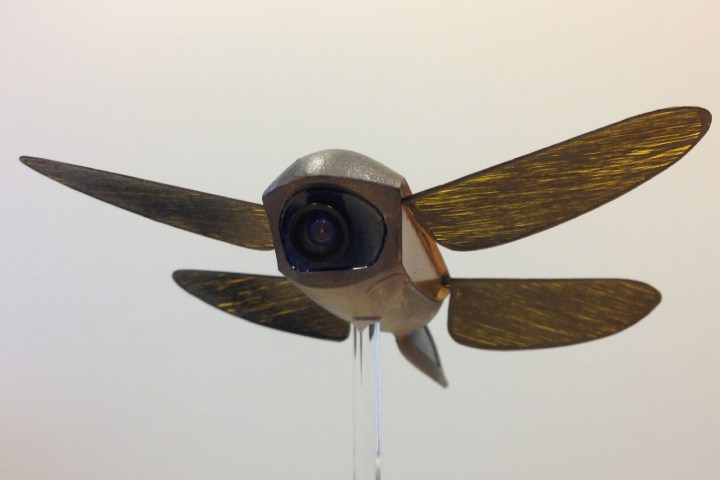
“If you’re going to look at what the most efficient and effective flyer in the insect world it’s likely to be the greatest predator — and that’s exactly what the dragonfly is,” Thomas told Digital Trends. “Dragonflies catch and eat everything from wasps and hornets to every other insect you can think of. The reason they can do that is because they’ve evolved their flight apparatus over 300 million years of air-to-air combat.”
Eschewing copter blades for flapping wings, the “Skeeter” drone is set to be publicly demoed in 2018. The project is funded by the U.K.’s Ministry of Defence, via the Defence Science and Technology Lab (DSTL).

“Flapping winged drones have two major advantages over existing multi-copter drones,” Thomas continued. “The first is that the response rate is at the wing-beat frequency, which gives it very, very rapid response to turbulence. It can fly in strong gusts of wind without being knocked around. The second advantage is that the rapid response rate is only very loosely dependent on the wing loading, which is the primary thing that determines the endurance that any these hovering vehicles have. For a regular quadcopter, to increase the endurance you have to make the propellers bigger, which results in a direct tradeoff between endurance and the ability to cope with turbulence. That doesn’t apply to flapping wing drones.”
If that wasn’t good enough, the use of wings instead of motors will allow the Skeeter drone to glide on thermals, and even perform a graceful landing if there is a sudden loss of power.
“If at some point we get delivery drones, they’ll need to be able to interact with the customer in a safe way,” Thomas said, regarding real-world applications. “Being able to glide into a landing at a relatively low speed — so you don’t have a flying lawnmower interacting with the customer — can only be a good thing. That sort of use-case would be very interesting, although there are plenty of other things you could do with this.”
The final Skeeter drone is set to be around 120mm in size (although the design can apparently easily scale), weigh less than 20 grams, including camera and navigation sensors, and have a top speed of around 45 kilometers per hour. That’s not all Animal Dynamics has planned, either.
“As a company, we’re interested in all the various different ways that natural systems have evolved to produce locomotion and motility at a much higher performance and efficiency than traditional engineering solutions,” CEO Alex Caccia told Digital Trends. “In addition to our Skeeter drone, we’re also working on a flapping propulsion vehicle for water, as well as looking at leg-based locomotion. The company’s not really about biomimetics; it’s about looking at the underlying physics that resulted in these extraordinary natural efficiency gains, and figuring out ways we can develop systems that use them to their full potential.”


